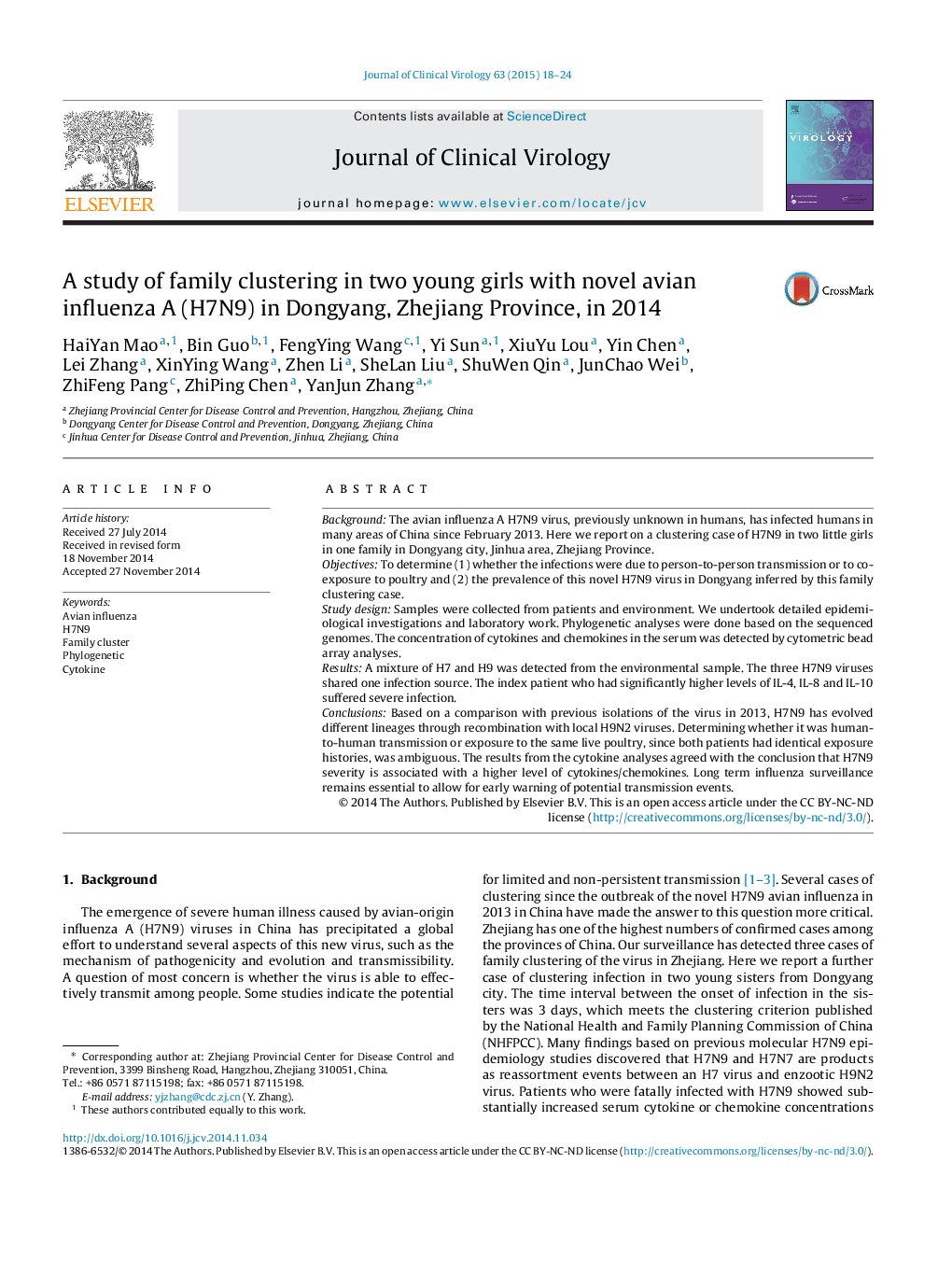| Article ID | Journal | Published Year | Pages | File Type |
|---|---|---|---|---|
| 6120410 | Journal of Clinical Virology | 2015 | 7 Pages |
Abstract
Based on a comparison with previous isolations of the virus in 2013, H7N9 has evolved different lineages through recombination with local H9N2 viruses. Determining whether it was human-to-human transmission or exposure to the same live poultry, since both patients had identical exposure histories, was ambiguous. The results from the cytokine analyses agreed with the conclusion that H7N9 severity is associated with a higher level of cytokines/chemokines. Long term influenza surveillance remains essential to allow for early warning of potential transmission events.
Related Topics
Life Sciences
Immunology and Microbiology
Applied Microbiology and Biotechnology
Authors
HaiYan Mao, Bin Guo, FengYing Wang, Yi Sun, XiuYu Lou, Yin Chen, Lei Zhang, XinYing Wang, Zhen Li, SheLan Liu, ShuWen Qin, JunChao Wei, ZhiFeng Pang, ZhiPing Chen, YanJun Zhang,
